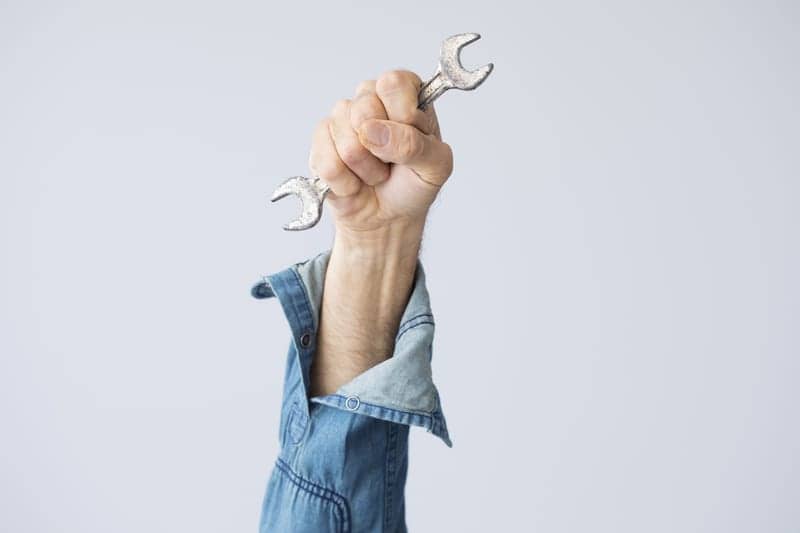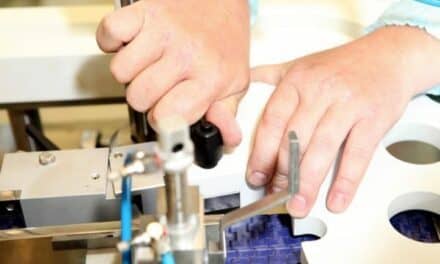By G. Wayne Moore, B.Sc., MBA, FASE
The floor of Congress is often fertile ground for well-intentioned but misguided legislation to be planted. The oft-repeated story of the nervous leader of a firing squad shouting out: “ready, fire, aim,” is a prime example of a sequence error that, unfortunately, is often repeated when bills are being written. In a moment of self-confession, House Speaker Nancy Pelosi once quipped: “We have to pass the bill so that you can find out what is in it.”
Well, I read the Critical Medical Infrastructure Right-to-Repair Act of 2020 and found that it falls into the legislative trap mentioned above. The bill was clearly written in a vacuum with no visible input from the medical equipment industry, or from other critical federal agencies such as the U.S. FDA and the U.S. Patent and Trademark Office (responsible for patent, trademark, copyright, trade secret, and enforcement policies). This bill should be called the “Don Quixote-Effect Act of 2020” as it is truly a “knight-errant” bit of legislation that mistakes windmills for dragons.
As pointed out in 24×7 editor Keri Forsythe-Stephens’ September Up Front column, this law would:
- Protect equipment owners, lessees, and servicers from liability under federal copyright law for creating an incidental copy of service materials or for breaking a digital lock during the course of equipment repair in response to COVID-19
- Allow equipment owners or lessees to fabricate patented parts on a non-commercial basis and as needed for repair or maintenance in response to COVID-19
- Invalidate provisions in equipment contracts to the extent that they prohibit or restrict the repair or maintenance of critical medical infrastructure in response to COVID-19
- Require manufacturers to provide, on fair and reasonable terms, access to information and tools used to diagnose problems and service, maintain, or repair equipment
Put another way, this law would:
- Destroy various general copyright laws.
- Destroy provisions of contract laws.
- Destroy patent laws.
- Destroy the Digital Millennium Copyright Act.
- Invalidate FDA regulations.
- Introduce adulterated products into interstate commerce.
- Throw the door on cybersecurity wide open to hackers.
- Invalidate certain equipment certifications, such as UL listing.
- Put patients at additional and unnecessary risk.
While we can all agree that a better relationship between medical device manufacturers and third-party service providers would benefit healthcare providers and patients—especially during these extraordinary times—having Congress trample on multiple laws of the land seems to me as a very poor way to get there.
With no regulatory or quality management restrictions on who can make demands from original equipment manufacturers (OEMs) and forcing OEMs, through this legislation, to provide service manuals, intellectual property, tools, proprietary test equipment, etc., the law may turn out to be a giant step backward for patient safety, facilitating less expensive and timely repairs, and fostering a better working relationship between OEMs and third-party service providers.
As a third-party service provider, I want to work together with OEMs to bring about a more mutually beneficial and healthy working environment—not try to use government force to compel them in a unilateral manner. I also strongly believe that third-party service providers must do their part as well by employing a well-vetted quality management system, specifically ISO 13485:2016 into their business.
We should also encourage the FDA to allow third parties to register as service providers, following all relevant provisions of the FDA quality systems requirements, such as filing Medical Device Reports when a patient injury or death is related to a service event. As responsible third-party service providers, this is our part in fostering better OEM relations and protecting patient safety.
Although the Critical Medical Infrastructure Right-to-Repair Act of 2020 is ostensibly only intended to be in effect during the pandemic, there is no reason to believe that it would not become a permanent law—and that is a scary proposition for any of us who have created and want to protect intellectual property; without that protection, medical device innovation will cease to exist.
Fortunately, this legislation, as it is currently written, is going nowhere—and that is its justly deserved fate. As a good friend of mine, who is the CEO of a large third-party service provider, put it: “Just forcing the release of manuals, software, and removing liability on everything via regulation is dangerous in this complicated industry.”
So, let us do the right thing and get back to the table of honest collaboration between the concerned parties and leave the heavy hand of government out of it.
Editor’s note: Do you agree or disagree with this assessment? Share your thoughts below.
G. Wayne Moore, B.Sc., MBA, FASE, is CEO of Acertara Acoustic Laboratories and 2020 Chair, Ultrasound Section—MITA/NEMA. Questions and comments can be directed to 24×7 Magazine chief editor Keri Forsythe-Stephens at [email protected].





Very strange, Wayne! I thought you stated in public that you always “agree with Binseng.” What happened? Did you forget it?! 🙂 🙂 🙂
While there are justifiably some concerns, I hit upon this sentence as being at the heart of why “Right to Repair” legislation is so desperately needed:
“Require manufacturers to provide, on fair and reasonable terms, access to information and tools used to diagnose problems and service, maintain, or repair equipment”
I am an imaging equipment specialist. In the facility where I work I have several cardiac and angio cath labs that I have had extensive manufacturer training on. I have provided almost exclusive service on different generations of this equipment for over 15 years. In the most recent versions of the software on these systems a critical function of the service software has been eliminated from availability under the service key they will give me without a service contract. As this function is necessary under the requirements of AIAT (Assemble-Install-Adjust-Test) regulations, It seems that the manufacturer is violating the law.
With his comments it appears to me that the author is objecting to enforcing these requirements and even the concept of AIAT.
Mr. Moore:
While I applaud your desired outcome… I think that it is tragically naïve.
As a Biomed with 30 years’ of experience; I have watched smart-young-MBAs completely destroy the concept of Company (or OEM) Loyalty and Pride; cheerfully sacrificing everything on the altar of the Almighty Dollar (not just in the Medical field… but throughout all Industries.)
They don’t believe in Dedication or Commitment; therefore it’s an invalid concept… and they have (sadly) succeeded in forcing their cynical view onto Business as-a-whole.
Gone are the days when an appeal to a company’s “better nature” has any effect whatsoever. There is no shame when it comes to turning *anything* into a revenue stream… and that is what Service is now. It’s not a matter of “making sure the customer is satisfied with their equipment and our company”, it’s all about Planned Obsolescence, and generating profit.
As-such…you will *never* be able to “work together with OEMs to bring about a more mutually beneficial and healthy working environment”; simply because it will cost them money. The only way to make that change is through either statutory force, or massive public outcry (Note that the second choice is just as difficult to effect as the first… but with different vectors; both will have the result of costing the OEM revenue, in different ways.)
As an example: In many (most) cases; OEM Service Techs are no-longer allowed to make small repairs (even when they know how), when replacing the Next Higher Assembly will make more money (and oh-by-the-way, that’s a Core Return…and *we* will change the $10 Capacitor on a $15k board, or the $200 HDD in a $35k computer, and then put them back into the Parts Stock.)
Now… does that mean that the regulations being crafted are properly written, or will be effective? Not necessarily; but *something* has to be done; and relying on the virtuousness or integrity of OEMs is *not* the answer; and is a waste of time; much like trying to teach a pig to sing.
In my opinion, if you want to be effective: Work to put qualified, knowledgeable people in touch with those crafting the Laws… so that they have a better chance of having a better, more useful result.
Thanks for your time.
https://24x7mag.com/standards/servicing-legislation/right-to-repair/musings-new-right-to-repair-act/
Paul DeLisle, CBET, CLRT, Net+, Sec+
Biomedical Equipment Support Specialist
Central Texas Veteran’s Health Care System
The opinions expressed, formed from my experience as a Biomedical Professional, are mine alone; and do not necessarily reflect the views or opinions of my Employer. (But my dog thinks I’m awesome…)
This post is severely misguided, and presents a mindset that is anti-Healthcare Technology Management in my 20 years experience as a very vocal member of the HTM community. Rather than dissecting the post, let’s just touch on a few facts being ignored:
1 – There are already FDA regulations already requiring most of the Act.
2 – You don’t “destroy” an existing law. That’s hyperbolic scaremongering in place of reasonable assessment. A medical device law can’t simply undo patent and other laws. That’s simply not how laws work. Furthermore the laws being said to be destroyed do not supersede the right of the owner of a device to service that device.
3 – I honestly don’t know anybody in the healthcare industry who has fought manufacturers directly in terms of service information and special tools, and won more than myself. The FDA, again, already requires most of the Act.
4 – This seems like an industry insider post, not a pro-HTM post. Wrong audience, bud.